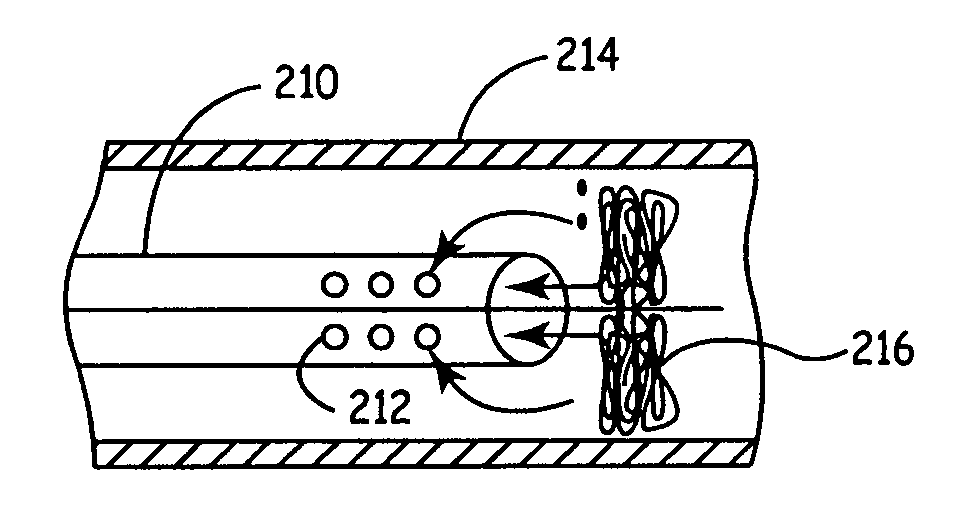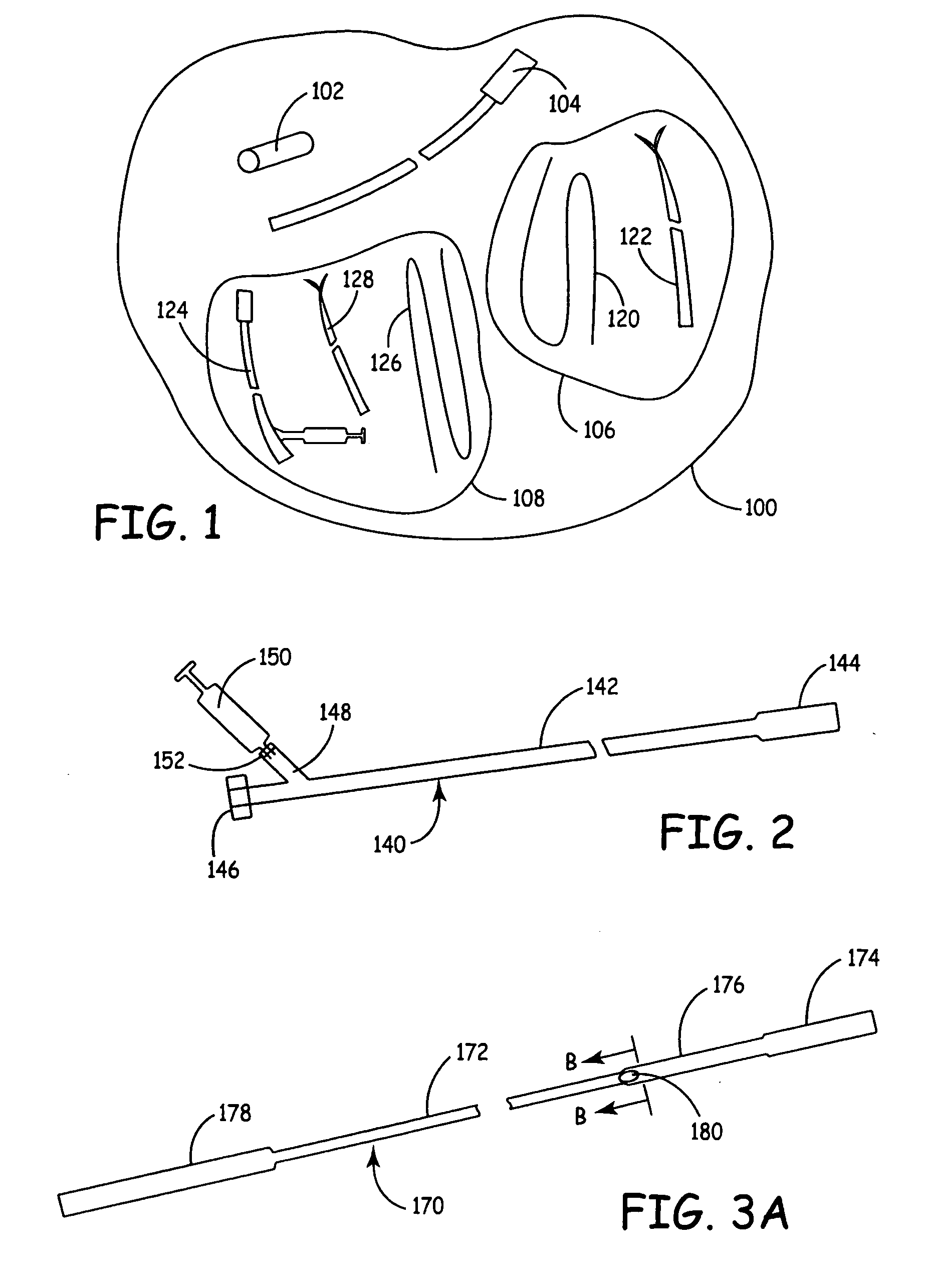Emboli filter export system
a filter and emboli technology, applied in the field of emboli filter export system, can solve the problems of localized cell death or microinfarct, myocardial infarct, paralysis, etc., and achieve meaningful long-term clinical benefit, prevent ischemic complications, and reduce platelet aggregation
- Summary
- Abstract
- Description
- Claims
- Application Information
AI Technical Summary
Benefits of technology
Problems solved by technology
Method used
Image
Examples
Embodiment Construction
[0041] An improved system for trapping and removing emboli from a patient involves an aspiration catheter that, in some embodiments, both transmits suction to the distal end of the catheter to aspirate liquid into the catheter as well as provides a protective lumen in which to draw the embolism protection device for removal from the patient. Thus, for removal, the embolism protection device can be drawn within the catheter while aspiration is applied. The aspiration catheter then functions as a vehicle for the removal of the embolism protection device. The use of suction along with the sheath catheter system can significantly reduce or eliminate the release of any emboli during the removal of the embolism protection device. In some embodiments, the aspiration catheter comprises an expanded compartment into which the embolism protection device is drawn in a recovery configuration. In some embodiments, the embolism protection device comprises a three dimensional filtering matrix that ...
PUM
 Login to View More
Login to View More Abstract
Description
Claims
Application Information
 Login to View More
Login to View More - R&D
- Intellectual Property
- Life Sciences
- Materials
- Tech Scout
- Unparalleled Data Quality
- Higher Quality Content
- 60% Fewer Hallucinations
Browse by: Latest US Patents, China's latest patents, Technical Efficacy Thesaurus, Application Domain, Technology Topic, Popular Technical Reports.
© 2025 PatSnap. All rights reserved.Legal|Privacy policy|Modern Slavery Act Transparency Statement|Sitemap|About US| Contact US: help@patsnap.com



